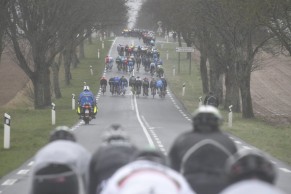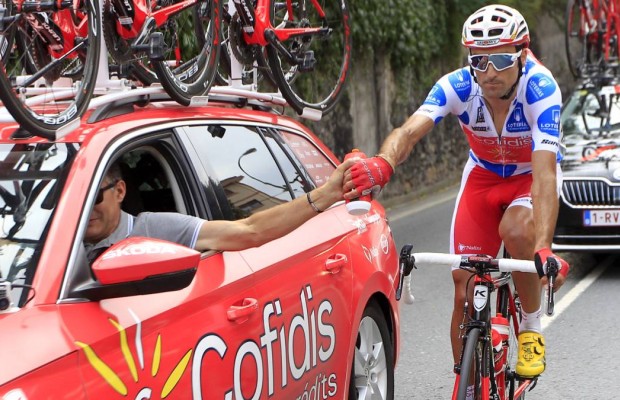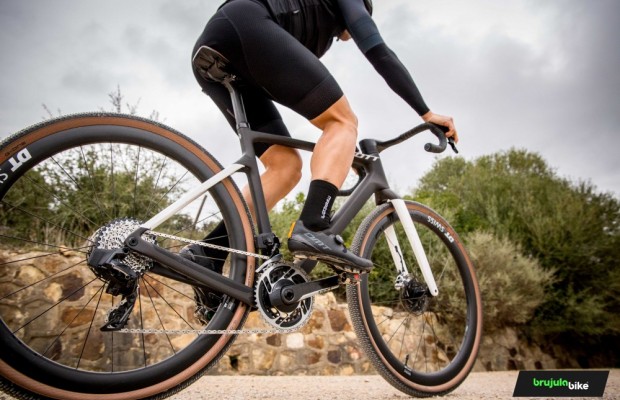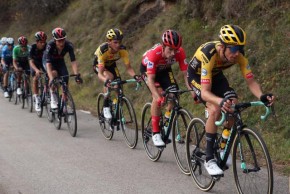How much time would a professional cyclist take out on an amateur in a race?
Professional cyclists operate at a different level compared to the rest of us who hit the road, however, few of us are aware of the real performance difference between us and the wonders of the bicycle. Power, weight, oxygen consumption, times... all are parameters that determine the performance of one and the other.

The differences between a professional and a touring cyclist
It's very curious, every time there is one of those flat and insipid stages in the Tour de France or any other race, publications recurrently appear on social networks commenting "well, we could have gone with them today".
If there is one thing that cycling has over other sports, it is that a hobby cyclist can accompany, with a minimum of form, the professionals as long as, of course, they do not push the pace to where they can. Then everything changes and the real differences come to light.
RECOMENDADO

Change wheels if you want to transform your bike's behavior

What bike size do you need? Here's how to find out

How does age affect performance and recovery?

How long cyclists can be pushed when handed a sticky bottle?

10 tips for safer and faster downhills on road bikes

The best gravel groupsets of the moment
The differences between what we are capable of and what professionals can do are easy to explain with numbers, starting with weight. Any professional cyclist, even those classified as rollers, classics or sprinters move at the limit of their weight, with body fat levels ranging between 6 and 8%, far from the more than 10% that most of us who go out on the road for leisure usually have.

This gives them a clear advantage at the slightest incline of the road. But in addition, they are capable of applying more power to the pedals in almost any situation, this further increases the difference when combined with the cyclist's weight and, of course, the ability to maintain a certain power for a longer time.
The reference here is the lactate threshold, which marks the intensity that can be maintained for a long enough time, if we talk about power, it is usually equated with the FTP or what is the same, the maximum watts we can maintain for an hour. An average touring cyclist has a relative FTP value that ranges between 3 and 4 W/kg, a figure that in the case of professionals moves around 6 W/kg. Anyone who regularly uses a power meter is able to assimilate what this means.
However, where a professional really makes a difference is in shorter efforts, in the 5-minute range, a figure associated with maximum oxygen consumption, the famous VO2max which would be like the displacement of the cyclist's engine in a car analogy.

While a hobby cyclist is capable of generating powers between 4 and 5 W/kg in that range, associated with an oxygen consumption that rarely exceeds 60 ml/kg/min in few people, any professional cyclist exceeds 70 ml/kg/min which gives us an idea of the innate capacity of their engine since, although the VO2max can be improved with training and reduced weight, it is a parameter that is mainly genetically determined. This allows them to generate a power in the 5-minute range that can even exceed 7 W/Kg)
In the real world
What do all these numbers mean when it comes to pedaling? Mainly one thing, that when a professional cyclist really pushes, we are not going to be able to follow him no matter how hard we try, not even in those flat stages of the Tour de France where the Strava files that some publish show us power and pulse figures that are genuinely leisurely and could be assumed by the majority. However, what we do not see from these stages is that at any slope they put themselves at power figures that would make any of us cut off from the group and let's not even talk about the final part of those stages, when the sprinters' teams start working and the speed does not drop below 60 km/h. Anyone who has competed in the master category can get a distant idea of the level of effort it takes to go there.
Luckily, today it is easy to compare efforts thanks to Strava segments that allow us to realize how far we are from professional cyclists. To cite some examples, in the 2022 Tour de France, Tom Pidcock won at the top of Alpe d’Huez after climbing its just over 11 kilometers in 38 and a half minutes, at more than 18 km/h average speed. However, that day he was not the fastest. Sepp Kuss took the coveted KOM by climbing in 35 minutes and 58 seconds, maintaining an average of 373 W during this time.

For a hobby cyclist, the goal in these 11 kilometers is to manage to go under 1 hour, a barrier that marks the difference between the time used by the majority and what is already considered a good mark for this port.
If we go to La Vuelta, one of the reference ports, the climb to La Morcuera, a touchstone for Madrid cyclists, was climbed in the penultimate stage of 2022 in exactly 22 minutes, with Miguel Ángel López taking the coveted KOM. Thymen Arensman took just one second more, this time with power data, which indicates that he had to maintain an average of 394 W during the ascent. Figures unreachable for the rest of us mortals.
In fact, the reference mark in this port is usually 30 minutes, a figure only achievable for the best master category cyclists. The bulk of touring cyclists have to settle for climbing it between 35 and 45 minutes, on a climb of just 9 kilometers and with power figures that rarely exceed 300 W.
Luckily in cycling other factors intervene such as the aerodynamic gain we get when riding wheel to wheel and that allows us to use much less effort to pedal at the same speed as the one who is pulling. This makes it possible for touring cyclists in good shape to often share training with professionals on days when their task is simply to ride and accumulate kilometers, an experience that allows us to observe up close the ease with which they are able to pedal at rhythms that for us mean going with accelerated breathing and praying that a slope does not make us lose the protective wake.